ELDs: Now or Later?

The electronic logging device mandate is less than four months away, but the regulation gives carriers that are already using older e-log systems the option to wait.
While first-time adopters will need to install ELDs in their trucks by Dec. 18, fleets using e-log systems categorized as automatic onboard recording devices, or AOBRDs, get a two-year extension. If they prefer, they can wait until Dec. 16, 2019, to make the move to devices that meet the technical specifications in the ELD rule.
Most recent-generation AOBRDs generally can be upgraded to compliant ELDs through software updates without swapping in-cab hardware.
But if you can wait, why change now?
One answer to that question may be in the fine print of the ELD rule.
Fleets can continue to use AOBRDs in existing trucks. They can even transfer an AOBRD to a new truck that is replacing an older vehicle. But any new trucks that represent an increase in the size of the fleet must be equipped with ELDs, not AOBRDs.
That means a trucking company that expands its vehicle count while continuing to use AOBRDs will find itself running a fleet with a mix of two different electronic logging systems. And that’s something many fleets would like to avoid.
“We equipped our trucks with electronic logs in 2008,” said John Pope, chairman of Cargo Transporters, a carrier based in Claremont, N.C. “We’ve been growing steadily and unless something negative happens with the economy, we expect to add more trucks next year, so we’ve decided to make the switch to ELDs.”
“We want to convert everyone in the fleet at one time,” he added. “That way, we don’t have to run a mixed set of rules.”
I’ve been recommending that it’s best to avoid trying to manage AOBRD and ELD at the same time.
MiX Telematics North America's Pete Allen
Trucking technology suppliers are helping customers evaluate their options.
“Some fleets are telling us that they want to remain on AOBRDs for as long as possible,” said Pete Allen, executive vice president of sales for MiX Telematics North America.
However, most of the company’s fleet clients are too dynamic to remain on AOBRDs, he said.
“They’re adding equipment to their fleets. They’re growing. Any new trucks they add have to be on ELDs,” Allen said. “I’ve been recommending that it’s best to avoid trying to manage AOBRD and ELD at the same time.”
One of the changes that arise with the shift from AOBRDs to ELDs is differences in supplying information to enforcement officers during roadside inspections.
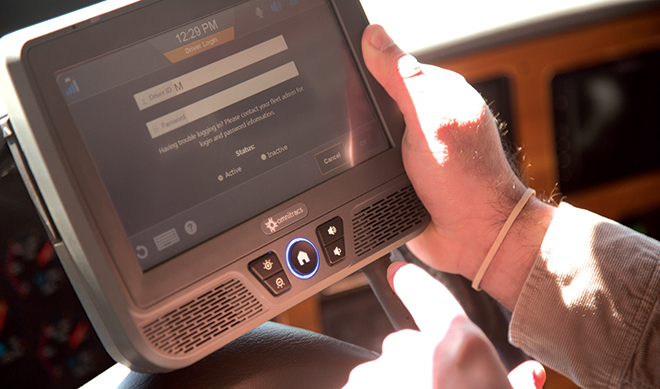
Omnitracs
“I would advise fleets to convert over to ELD sooner rather than later,” said Kam Roshan, product manager for compliance at Omnitracs. “A mix of ELD and AOBRD vehicles in your fleet could be confusing for drivers as they move from vehicle to vehicle, especially during a roadside inspection where the display is used for an AOBRD, and an electronic file transfer for ELD.”
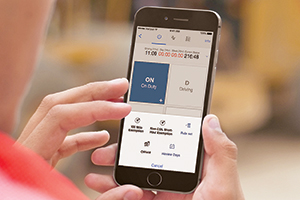
Telogis
Some also are concerned that enforcement officers will be dealing with a learning curve of their own. “The process for identifying AOBRD and ELDs will be a tricky training scenario for the [Department of Transportation] inspectors,” said Erin Cave, vice president of product management at Telogis, which is part of Verizon Telematics. “It would seem beneficial to move to an ELD as soon as possible in order to avoid any misunderstood violations.”
Drivers aren’t the only ones at fleets affected by this technology, because office personnel must carefully consider drivers’ hours-of-service status when assigning loads.
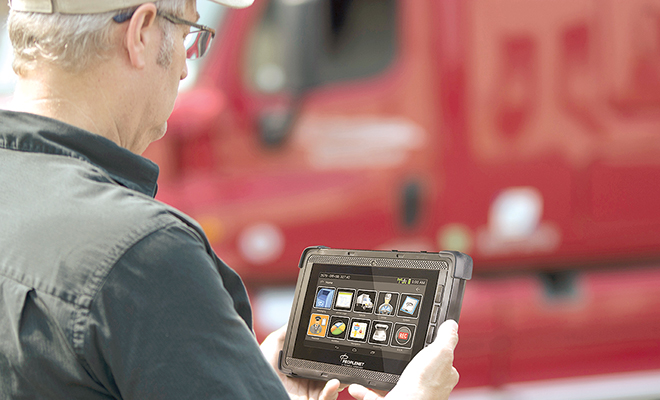
PeopleNet
Eric Witty, vice president of product management at PeopleNet, pointed out that if fleets are running AOBRDs and ELDs side by side, they will have to manage two different systems and user interfaces.
“Given the potential confusion in this scenario, it might be in the best interest of the fleet and its users to fully upgrade to ELDs prior to 2019 to streamline the driver and back-office experiences,” he said.
Nevertheless, there are arguments for sticking with AOBRDs.
“I don’t see any advantages to moving to ELDs,” said Mike Alexander, director of driver services for Paschall Truck Lines. The company has AOBRDs in all of its trucks and isn’t planning to expand the size of its fleet.
“The hours-of-service rules don’t change,” he said. “You just have to start all over and learn a new software system. Our drivers are used to the AOBRDs, and we’re very comfortable where we’re at.”
Alexander explained that one advantage of staying with AOBRDs is the ease of making edits. He gave the example of a driver forgetting to change his duty status on the log when parked for the night at a truck stop.
“The next morning, the log says that they’re out of hours because they never showed their 10-hour break,” Alexander said. “The way it is right now with AOBRDs, we can go in and edit it for them, and all they have to do is approve the correction. With the ELD, the driver has to do this himself. If he’s an entry-level driver, it may be difficult to comply with all of the ELD requirements correctly without help.”
I don’t see any advantages to moving to ELDs.
Paschall Truck Lines' Mike Alexander, whose company uses AOBRDs
Paschall, based in Murray, Ky., ranks No. 98 on the Transport Topics Top 100 list of the largest for-hire carriers in North America.
The shift of responsibility to the driver is one of the key changes that come with ELDs.
“With AOBRDs, carriers have more control over log edits and handling of unassigned activity,” Omnitracs’ Roshan said. “With ELDs, more of the responsibility is in the driver’s hands. ELDs require that drivers be able to edit their logs, whereas with AOBRDs, it is optional.”
Pope, of Cargo Transporters, agreed that it would make sense to stay on AOBRDs if no trucks will be added to the fleet.
“It would be appealing to let the dust settle with respect to the ability of enforcement to understand the new ELD formats and systems,” he said. “You could wait and make sure the communications between the cab and the roadside inspector are solid. Waiting also gives you more time to train the drivers and your staff.”
The appeal of “letting the dust settle” with such a big change for the industry is understandable.
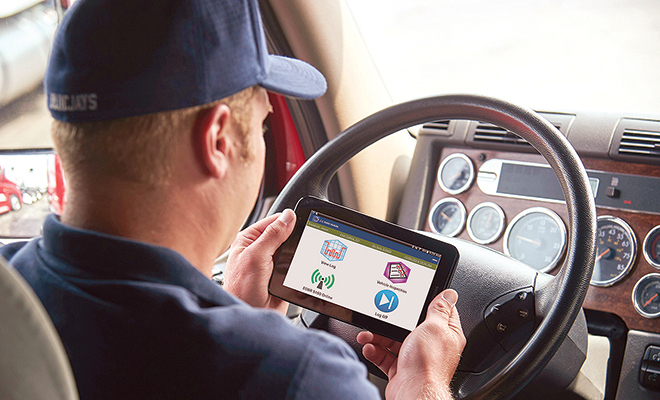
J.J. Keller & Associates, Inc.
“Fleets on AOBRD technology have a comfort level complying with those regulations,” said Tom Reader, director of marketing for J. J. Keller & Associates. “By waiting to see the industry impacts of moving to ELDs, they can better prepare themselves for how those changes will affect their operation.”
Any change in technology can bring hiccups.
“We have a number of fleets that want to wait and continue using AOBRDs until the data transfer requirements and process are working without flaws,” said Fred Fakkema, vice president of compliance at Zonar Systems.
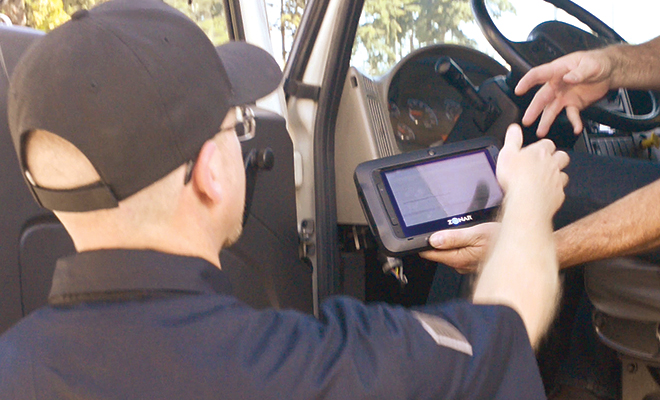
Zonar Systems
Depending upon the hardware in place in the truck cab, moving from an AOBRD to an ELD can be a simple matter of updating to new software.
“Ensure the AOBRD is ELD-ready and is just an over-the-air update to be ELD compliant — no hardware change,” Fakkema said.
Fleets that choose to stay with AOBRDs will get to wait until all the development is done, the data transfer issues are resolved and the training for enforcement is complete, he said.
Another significant change that comes with the move from AOBRDs to ELDs is the matter of unassigned driving time.
“If a vehicle is moved but there is no driver assigned to that vehicle, the ELD is going to capture that time that the vehicle was driven,” said Sid Nair, senior director of transport and compliance for Teletrac Navman.
“That drive time has to be assigned to a driver or some other person at the company,” he said. “This is part of the ELD mandate and AOBRDs don’t have this. This creates work that fleet managers haven’t had to handle before.”
One way that the Teletrac Navman ELD addresses this issue is through a feature that tracks yard moves. “When a driver gets to a certain destination and the truck is inside the yard of a receiver or shipper and they’re simply moving or repositioning a trailer, they can mark this as a yard move and it doesn’t count toward their driving time,” said Adolfo De La Herran, president of Fontana, Calif.-based Pointdirect Transport. “It does go toward their on-duty time but not toward their driving time, so that has helped drivers have more drive time.”



